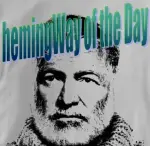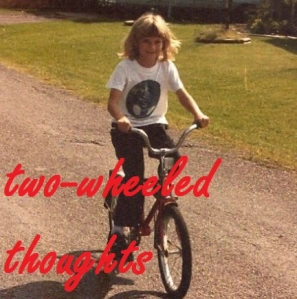 Family Trouble is a delightful collection about the challenges of writing nonfiction about family. I loved the wide range here: of experiences related by these established (published) writers; of the advice they have to offer; and in the writers, themselves, who are of diverse ethnicities and backgrounds, sexualities, gender expressions, and life experiences. Editor Castro contributes a pure-gold introduction, which incorporates quotations and references to all her contributors but also manages to offer her own perspective. I was on page 7–yes, in the introduction–when I found my first epiphany.
Family Trouble is a delightful collection about the challenges of writing nonfiction about family. I loved the wide range here: of experiences related by these established (published) writers; of the advice they have to offer; and in the writers, themselves, who are of diverse ethnicities and backgrounds, sexualities, gender expressions, and life experiences. Editor Castro contributes a pure-gold introduction, which incorporates quotations and references to all her contributors but also manages to offer her own perspective. I was on page 7–yes, in the introduction–when I found my first epiphany.
Essays are sorted into sections by outlook or strategy: “Drawing Lines,” “The Right to Speak,” “Filling the Silence,” “Conversations of Hope.” I have read some of the contributors before: Paul Lisicky, Alison Bechdel, Robin Hemley, Dinty W. Moore, Richard Hoffman, Sue William Silverman (and have attended classes with Karen Salyer McElmurry). Others I knew by reputation: Susan Olding, Susan Ito, Sandra Scofield, Lorraine M. López, and more. I did have favorites, sure, but I emphasize, I most appreciated the interplay, the sum of parts: these diverse voices and perspectives playing off each other. The anecdotes from experiences are valuable (and often entertaining or humorous, although there is much pain here, too). The writing is lovely. It’s a hell of a collection.
Here are a few of my most treasured lessons.
“Good writing must do two things,” contends Vivian Gornick in The Situation and the Story: The Art of Personal Narrative (2001). “It must be alive on the page, and it must persuade the reader that the writer is on a voyage of discovery.” Writing The Truth Book, I truly was on a genuine voyage of discovery, and these two driving questions* helped shape the memoir, guiding my choices about what to disclose and what to omit. If an incident, detail, or family story contributed in some way to the answering of one or both of those questions, then it went onto the page. If it didn’t, I didn’t even draft it.
From Castro’s introduction; and she mentions the *two driving questions earlier in the paragraph, but I submit that they don’t even matter here, for the purpose of the lesson she offers. I’ll try and recapture it: the memoirist must be driven to tell a story in pursuit of discovery or of answering a question or questions. The issue of whether to include certain material (which, I’ve said elsewhere, is a central issue in crafting memoir) then becomes simply an issue of whether it pursues the main question(s), the desired discovery. …This assumes that we know why we’re writing, and I don’t, always. Sometimes I just want to write a thing, without knowing what the burning issue is. So this becomes a multipart problem: figuring out why a story needs writing (what’s the burning question?), and then mindfully allowing that question to sort what needs inclusion and what does not.
This seems, now that I’ve thought it out, plenty obvious. But I had to get there, and Castro helped.
I also really appreciated the concept that the idea of family stories exists on a spectrum, with the immediately, intimately personal (individual) on one end, and a global human community on the other. From Aaron Raz Link:
A writer working with family materials stands in a liminal space where my story meets your story, meets the reader’s story, and becomes our story. Before I became a writer, I was a historian working in public museums. As a result, I see that family assembles our individual stories together to become the fabric we call culture and history. This process gives each of us some sense of belonging to a larger world.
Richard Hoffman’s first memoir helped put the man who raped him in childhood away in prison, and therefore offers a particularly stark example of personal or family stories having larger ramifications. He contributes to the same idea:
The trouble with the view put forth in dozens of books about family “dysfunction,” some of them interesting and helpful, is that it tries to understand the family without its community, without its culture and class, without its history and the relation of that history to–well, History.
Somehow, I feel like this relates back to some comments I made near the end of this post, about interdisciplinarity. Seeing the connections feels like some of the most important learning we can do, ever.
I loved that some essays took different forms, like Susan Olding’s contribution, “Mama’s Voices,” with its stop/play/fast-forward organization, involving tape recordings. I appreciated the far-reaching context and concerns of Faith Adiele’s “Writing the Black Family Home.” And I enjoyed and marveled at Ariel Gore’s “The Part I Can’t Tell You,” in which she does tell us. Or does she?
Much to be admired, and probably of interest to a fan of memoir as well as a hopeful writer of same.
Filed under: book reviews | Tagged: creative nonfiction, essays, memoir, nonfiction, writing/craft, WVWC MFA reading list |







[…] craft book has things in common with both Family Trouble and Fearless Confessions. Like the former, it addresses in part the difficulties in writing about […]
[…] *Family Trouble, Joy Castro […]